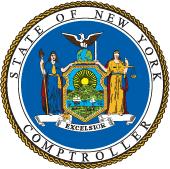Objective
To determine whether the Department of Health adequately oversees adult care facilities to ensure quality of care and safety for residents. The audit covered the period from January 2018 through October 2024.
About the Program
Adult care facilities provide residential care to adults who are substantially unable to live independently because of physical or other limitations associated with age, disabilities, or other factors. They fill a need for individuals who need assistance but at a less intensive level of care than residents in nursing homes. Adult care facility residents are primarily older, need assistance with activities of daily living, and have multiple health conditions. In 2023, there were 534 adult care facilities with 37,547 residents in New York State.
The Department of Health (DOH) is responsible for the oversight of adult care facilities, primarily through regular inspections every 12 to 18 months and complaint investigations. DOH reports the results of its inspections and investigations to facilities so they may take any necessary corrective actions. For the period from January 2018 through December 2023, DOH conducted 1,362 full inspections, received 7,440 complaints, and completed 6,498 complaint investigations.
Key Findings
DOH is not adequately overseeing adult care facilities to ensure quality of care and safety for residents. We determined that DOH did not inspect facilities within the required time frames or conduct follow-up activities at facilities that received citations during the prior full inspections. For example, DOH:
- Did not begin full inspections for 21 of 30 sampled facilities (70%) within the required time frames, including eight that DOH started between 3 and 5 years late. When we conducted site visits at 20 of these facilities, we identified issues affecting health and safety, such as crumbling stairs, refrigerators that were not cold enough, and dishwashers that were not hot enough. Significantly, we found alcohol and marijuana paraphernalia left out in a medical office and an administrator’s office, respectively. Such inspection issues may have been identified and corrected earlier through full inspections on the required schedule.
- Could not provide any evidence that it followed up on any of the citations in the 30 full inspection reports we reviewed to ensure the issues were actually corrected by the facilities. These citations included 89 violations that represent harm or risks to residents and quality of life, which require documentation of DOH follow-up actions. In addition, 18 of 20 facilities we visited did not correct all the issues identified in the full inspection reports that we reviewed, including 50 violations. During site visits, we also observed uncorrected issues from prior inspections, including a lack of staff certified in basic first aid, expired medications, and failure to conduct monthly fire drills.
We also determined DOH did not have evidence it investigated certain complaints or fully documented its investigation of others. Further, DOH did not issue investigation reports to facilities on time or at all in some cases, did not issue investigation result letters to complainants, and did not complete investigations within the required time frames. Specifically, we determined DOH:
- Did not have evidence it investigated 101 of 569 allegations (18%) on 38 complaints, including three complaints with 25 allegations that did not have evidence of any investigation being conducted at all. These complaints included allegations of poor care, lack of resident supervision, and dirty or poorly maintained facilities.
- Did not issue 60 of 130 complaint investigation reports (46%) to facilities within 30 days after the inspection end date, as required, and did not issue seven reports at all. Of the 60 late reports, 34 were for investigations with substantiated allegations, including a resident abusing another resident, call bells not working correctly, and rooms not properly cleaned.
- Did not send 16 investigation result letters to complainants as required. In addition, 40 letters were issued more than 30 days after the investigation end date, including one that was not issued for more than a year. The letter still not issued more than a year after the investigation pertained to a complaint about an overall lack of care by the facility, including allegations that the facility did not sufficiently provide medications to, feed, or bathe a resident, resulting in family members having to do so.
- Took longer than 30 days to investigate 13 complaints, taking, on average, 67 days to complete them, with one taking 153 days. This complaint included substantiated allegations of mice in the resident’s room, resulting in citations to the facility. Another allegation of a resident not receiving their insulin correctly took 97 days to investigate.
When inspection and follow-up activities are not completed as required, DOH cannot ensure facilities are complying with statutory and regulatory requirements, which ultimately may impact resident care and safety. When complaints aren’t investigated within the prescribed time frames, potentially dangerous circumstances may go unaddressed. Additionally, the lack of, or late, reporting impacts DOH’s ability to follow up and hold facilities accountable because the investigation result letters notify facilities of issues that need to be addressed so they can develop plans of correction when necessary. Further, without prompt investigation result letters, complainants have no assurance their complaints have been received or addressed.
Key Recommendations
- Review current procedures, guidance, and training and implement changes to ensure full inspections are completed on time and in accordance with laws and regulations and that facilities correct all violations in a timely manner.
- Establish and implement formal procedures to ensure that complaints are fully investigated and properly documented, and ensure monitoring procedures are followed so complaint investigation results are communicated to facilities within the required 30-day time period.
- Ensure DOH staff collect all required information from complainants who do not specifically request anonymity, and establish and document time frames for issuing investigation result letters to complainants.
Nadine Morrell
State Government Accountability Contact Information:
Audit Director: Nadine Morrell
Phone: (518) 474-3271; Email: [email protected]
Address: Office of the State Comptroller; Division of State Government Accountability; 110 State Street, 11th Floor; Albany, NY 12236
